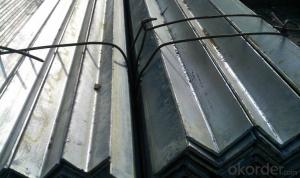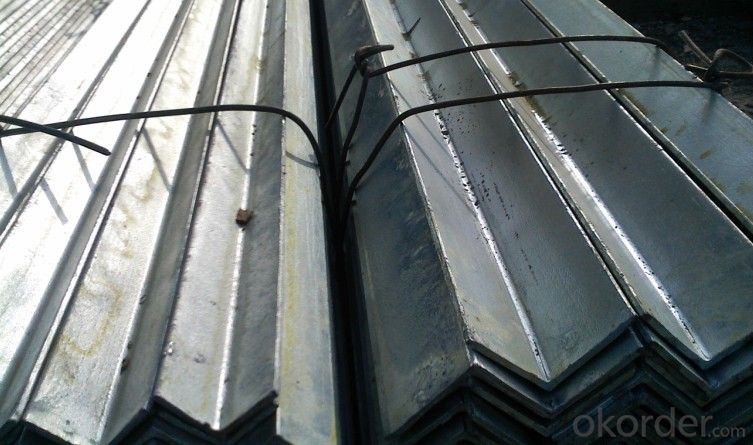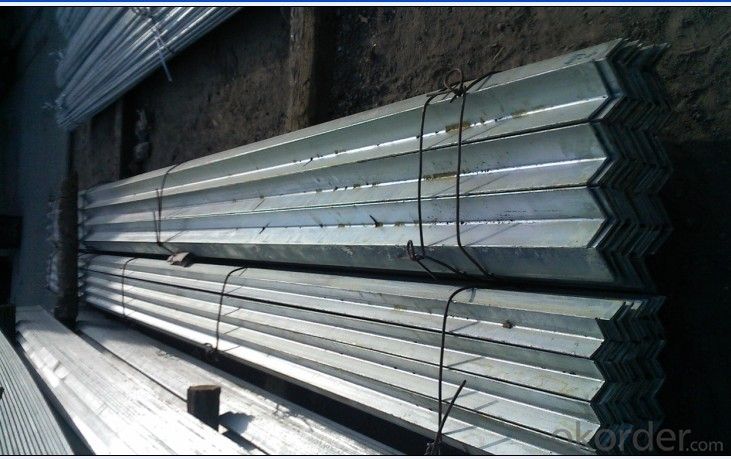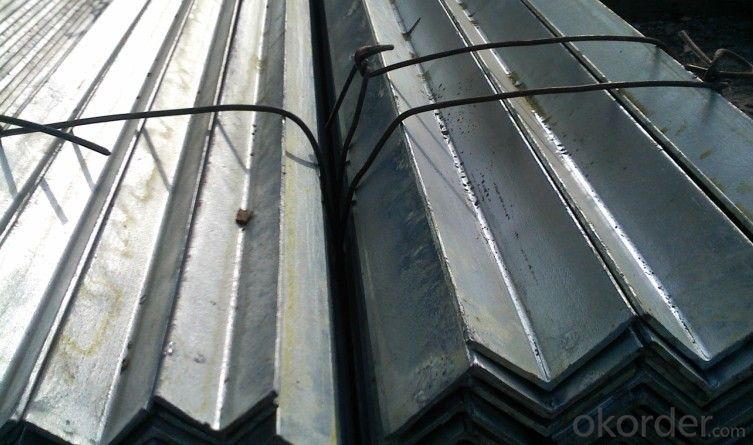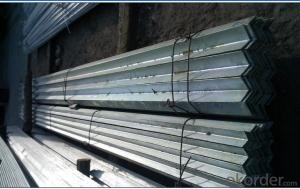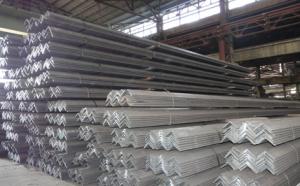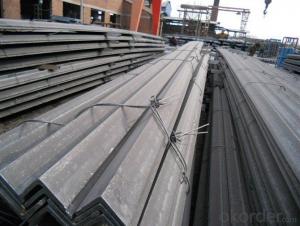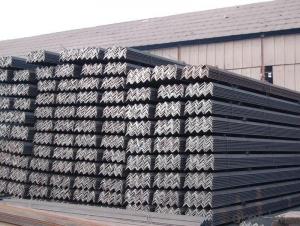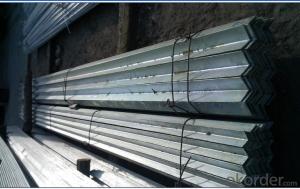GB Standard Hot Rolled Angle Steel
- Loading Port:
- China Main Port
- Payment Terms:
- TT or LC
- Min Order Qty:
- -
- Supply Capability:
- -
OKorder Service Pledge
OKorder Financial Service
You Might Also Like
Product Description:
OKorder is offering Angle Steel at great prices with worldwide shipping. Our supplier is a world-class manufacturer of steel, with our products utilized the world over. OKorder annually supplies products to European, North American and Asian markets. We provide quotations within 24 hours of receiving an inquiry and guarantee competitive prices.
Product Applications:
According to the needs of different structures, Angle can compose to different force support component, and also can be the connections between components. It is widely used in various building structures and engineering structures such as roof beams, bridges, transmission towers, hoisting machinery and transport machinery, ships, industrial furnaces, reaction tower, container frame and warehouse etc.
Product Advantages:
OKorder's Angle Steel are durable, strong, and resist corrosion.
Main Product Features:
· Premium quality
· Prompt delivery & seaworthy packing (30 days after receiving deposit)
· Corrosion resistance
· Can be recycled and reused
· Mill test certification
· Professional Service
· Competitive pricing
Product Specifications:
1. Invoicing on theoretical weight or actual weight as customer request
2. Length: 6m, 9m, 12m as following table
3. Sizes

Sizes: 25mm-250mm | ||
a*t | ||
25*2.5-4.0 | 70*6.0-9.0 | 130*9.0-15 |
30*2.5-6.6 | 75*6.0-9.0 | 140*10-14 |
36*3.0-5.0 | 80*5.0-10 | 150*10-20 |
38*2.3-6.0 | 90*7.0-10 | 160*10-16 |
40*3.0-5.0 | 100*6.0-12 | 175*12-15 |
45*4.0-6.0 | 110*8.0-10 | 180*12-18 |
50*4.0-6.0 | 120*6.0-15 | 200*14-25 |
60*4.0-8.0 | 125*8.0-14 | 250*25 |
4. Payment terms:
1).100% irrevocable L/C at sight.
2).30% T/T prepaid and the balance against the copy of B/L.
3).30% T/T prepaid and the balance against L/C
5.Material details:
Alloy No | Grade | Element (%) | |||||
C | Mn | S | P | Si | |||
|
|
|
|
|
|
| |
Q235 | B | 0.12—0.20 | 0.3—0.7 | ≤0.045 | ≤0.045 | ≤0.3 | |
|
|
|
|
|
|
| |
Alloy No | Grade | Yielding strength point( Mpa) | |||||
Thickness (mm) | |||||||
≤16 | >16--40 | >40--60 | >60--100 | ||||
≥ | |||||||
|
|
|
|
|
| ||
Q235 | B | 235 | 225 | 215 | 205 | ||
Alloy No | Grade | Tensile strength (Mpa) | Elongation after fracture (%) | ||||
Thickness (mm) | |||||||
| ≤16 | >16--40 | >40--60 | >60--100 | |||
≥ | |||||||
|
|
|
|
|
|
| |
Q235 | B | 375--500 | 26 | 25 | 24 | 23 | |
FAQ:
Q1: How soon can we receive the product after purchase?
A1: Within three days of placing an order, we will begin production. The specific shipping date is dependent upon international and government factors, but is typically 7 to 10 workdays.
Q2: What makes stainless steel stainless?
A2: Stainless steel must contain at least 10.5 % chromium. It is this element that reacts with the oxygen in the air to form a complex chrome-oxide surface layer that is invisible but strong enough to prevent further oxygen from "staining" (rusting) the surface. Higher levels of chromium and the addition of other alloying elements such as nickel and molybdenum enhance this surface layer and improve the corrosion resistance of the stainless material.
Q3: Can stainless steel rust?
A3: Stainless does not "rust" as you think of regular steel rusting with a red oxide on the surface that flakes off. If you see red rust it is probably due to some iron particles that have contaminated the surface of the stainless steel and it is these iron particles that are rusting. Look at the source of the rusting and see if you can remove it from the surface.
Images:
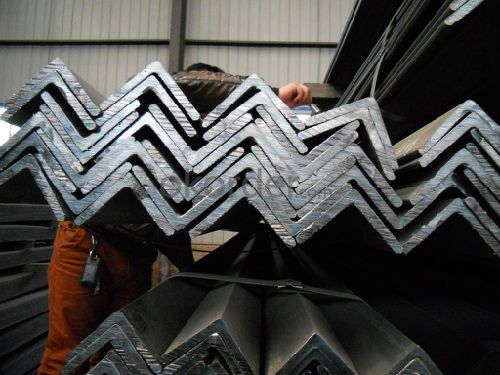

- Q: What are the standard sizes of steel angles?
- The region and industry dictate the standard sizes of steel angles, although there are widely utilized common sizes. Steel angles generally come in equal leg and unequal leg sizes. Equal leg angles have standard sizes ranging from 20x20mm to 200x200mm, with thicknesses ranging from 3mm to 26mm. Unequal leg angles have one leg longer than the other, and their standard sizes range from 25x16mm to 200x150mm, with thicknesses ranging from 3mm to 15mm. These standard sizes find widespread use in construction, engineering, and manufacturing industries for various purposes, including structural supports, framing, and bracing. It is worth noting that these sizes may differ based on project-specific requirements or industry-regulated standards.
- Q: Can steel angles be used for manufacturing safety barriers?
- Yes, steel angles can be used for manufacturing safety barriers. Steel angles are commonly utilized due to their structural strength, durability, and ability to withstand impact. Their L-shape design allows for easy installation and provides stability, making them suitable for constructing safety barriers in various settings such as highways, construction sites, and industrial facilities.
- Q: How do you calculate the moment of inertia for a steel angle?
- In order to determine the moment of inertia of a steel angle, it is necessary to have knowledge of the angle's dimensions and shape. The moment of inertia measures an object's resistance to rotational changes and is influenced by the distribution of mass and the distance between the object's mass and the axis of rotation. For a steel angle, the moment of inertia can be computed using the parallel axis theorem, which states that the moment of inertia around an axis parallel to the original axis is equal to the sum of the moment of inertia around the original axis and the product of the mass and the square of the distance between the two axes. To calculate the moment of inertia for a steel angle, the following steps can be followed: 1. Obtain the measurements of the steel angle, including its length, width, and thickness. 2. Determine the angle's area by multiplying the length by the thickness. 3. Identify the centroid of the angle, which is the point where the mass is evenly distributed. For a symmetrical angle, the centroid is located at the intersection of the two legs. For an asymmetrical angle, the centroid can be determined by utilizing the geometric properties of the shape. 4. Compute the moment of inertia around the centroid axis using the formula for a rectangle: I = (1/12) * width * thickness^3. This calculation assumes that the angle is a thin-walled section. 5. Calculate the distance between the centroid axis and the axis for which the moment of inertia is desired. This can be accomplished by measuring the perpendicular distance between the two axes. 6. Apply the parallel axis theorem to determine the moment of inertia around the desired axis. The formula is: I_total = I_centroid + mass * distance^2. By following these steps, it is possible to calculate the moment of inertia for a steel angle. However, it should be noted that these calculations are based on a simplified model of the angle and may not provide accurate results for complex or irregular shapes.
- Q: Can steel angles be used for fencing?
- Yes, steel angles can be used for fencing. Steel angles provide strength and durability, making them suitable for fencing applications. They can be used as posts or support structures for chain link, wire mesh, or other types of fencing materials.
- Q: Are steel angles available in different finishes?
- Indeed, there are a variety of finishes available for steel angles. To enhance their appearance or provide extra protection against corrosion, steel angles can undergo different coatings or treatments. Some popular finishes for steel angles include galvanized, painted, or powder-coated options. Galvanized steel angles are coated with a layer of zinc to prevent rusting, while painted or powder-coated finishes offer a wide range of color choices for aesthetic purposes. Moreover, steel angles can also be left unfinished, creating a raw and industrial look. The diverse range of finishes for steel angles provides greater flexibility in their applications, allowing them to be customized to meet specific functional and aesthetic requirements.
- Q: Are steel angles resistant to corrosion?
- Generally, steel angles exhibit resistance to corrosion. Typically, steel angles are manufactured from carbon steel or stainless steel, both of which possess inherent properties that resist corrosion. Carbon steel angles develop a protective layer of iron oxide, commonly known as rust, when exposed to oxygen and moisture. This rust layer acts as a barrier, preventing further corrosion of the underlying metal. Conversely, stainless steel angles contain at least 10.5% chromium, which results in the formation of a thin, transparent oxide layer on the surface. This oxide layer, referred to as a passive film, offers exceptional corrosion resistance, making stainless steel angles highly resistant to rust and other forms of corrosion. Nevertheless, it is essential to acknowledge that steel angles can still corrode under specific conditions, such as prolonged exposure to high levels of moisture or corrosive chemicals. To enhance the corrosion resistance and prolong the lifespan of steel angles, regular maintenance and proper cleaning are imperative.
- Q: How do steel angles contribute to the overall sustainability of a building?
- Steel angles contribute to the overall sustainability of a building in several ways. Firstly, they are often made from recycled steel, reducing the demand for raw materials and the energy required for manufacturing. Additionally, steel angles are durable and long-lasting, reducing the need for frequent replacements and minimizing waste. Their strength and versatility also allow for efficient structural designs, optimizing the use of materials and reducing the overall weight of the building. Lastly, steel angles can be easily recycled at the end of their life cycle, further reducing the environmental impact of the building.
- Q: What is the typical tolerance for steel angles?
- The specific application and industry standards determine the typical tolerance for steel angles. Generally, the industry standard allows for a tolerance of ±1/8 inch or ±3 millimeters. This means that the actual dimensions of the angle can differ by up to 1/8 inch or 3 millimeters from the specified dimensions. It is worth noting that these tolerances may differ depending on the grade of steel and the manufacturing process used. Consequently, it is vital to refer to the appropriate industry standards or specifications for the specific project in order to ascertain the precise tolerance requirements for steel angles in that particular application.
- Q: What are the different load-carrying capacities for steel angles?
- The load-carrying capacities for steel angles vary depending on factors such as the size, shape, and material of the angle, as well as the specific application and installation method. It is recommended to consult engineering resources, industry standards, or a structural engineer for accurate load-carrying capacity information.
- Q: What is the maximum length of a steel angle?
- The maximum length of a steel angle typically depends on the manufacturing capabilities and transportation limitations. However, it is common for steel angles to be produced in lengths up to 40 feet or 12 meters.
Send your message to us
GB Standard Hot Rolled Angle Steel
- Loading Port:
- China Main Port
- Payment Terms:
- TT or LC
- Min Order Qty:
- -
- Supply Capability:
- -
OKorder Service Pledge
OKorder Financial Service
Similar products
Hot products
Hot Searches
